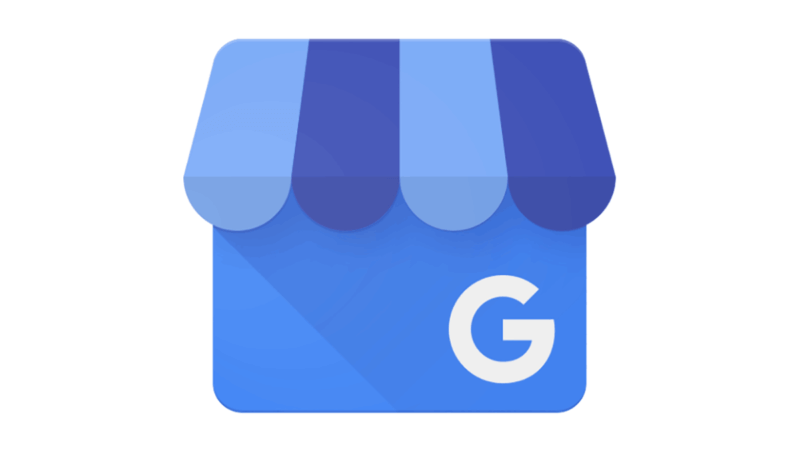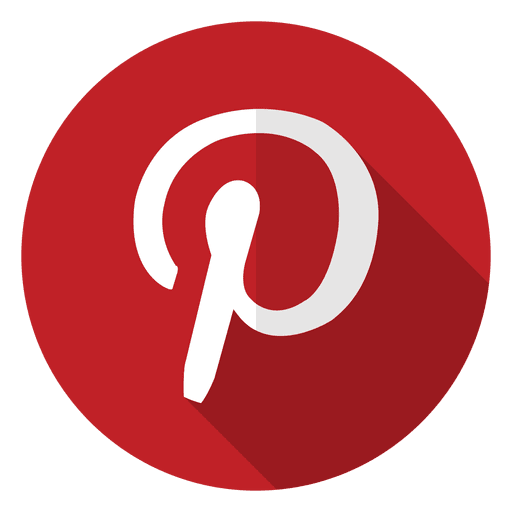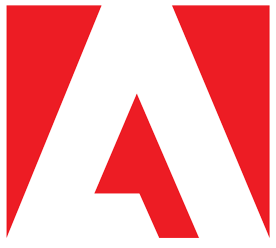How I Turned My Father's Side Venture Into A $9.25M/Year Home Gym Equipment Brand
Hello! Who are you and what business did you start?
I am Matt Dawson and am the President of Ironmaster. We manufacture and sell our brand of home gym fitness equipment domestically and in more than 20 International markets. Ironmaster specializes in strength training gear, primarily of our proprietary designs. Our primary market is individuals who want to have their gym at home.
Our top-selling product is a patented adjustable dumbbell system called Quick-Lock Dumbbells. This is a more serious training tool with large weight ranges and greater durability than other adjustable weights on the market. We tend to attract users with weight training experience who don’t want to settle for gimmicks and are ready to invest in the best quality equipment. Of course, we are always gaining new trainer customers as well and our equipment is still approachable.
Ironmaster is a multi-million dollar company with a rock-solid reputation as an innovator, top-level service, and one of the longest established fitness equipment manufacturers in the world.

What's your backstory and how did you come up with the idea?
I got started in this industry and business like a lot of fortunate young people have the family business. My dad founded this business back when I was a teen in the Bay Area of California. It was very much a part-time venture for him while working elsewhere to make an income. I would spend some summers and weekends working in the factory learning metalworking, upholstery, painting, and a bit of marketing. Even back in middle school I had an affinity for metal shops and wood shops and have always loved to build things. Creating something from nothing seems to be a trait passed down to me. As much as I enjoyed building things, the fitness industry business and the big potential I could imagine for growth was just as motivating.
I worked more hours as I entered college to study business and it eventually led to full-time work around 1985. I wasn’t fully in charge, but my father had most of his focus on a second business he was operating (that was more lucrative) and I worked my way into General Manager in a few years. I took on all aspects of operations, manufacturing, sales, photography, and marketing where I even came up with the brand name still in use today. We did everything on a small budget in house, even photography like this:



After I challenged myself to learn a lot of new things, I started to notice improvements in operations and success in the shoestring marketing efforts. This ultimately led to an offer to become a partner in the business. Business was growing, but I was finding it increasingly difficult to work in a family business without true control, some conflicts, and wanted to try something new. So I cashed out and relocated from the Bay Area up to Washington State in 1990 and worked as a sales engineer in the instrumentation and controls industry for many years.
Ironmaster had grown to just over $1M in the late 1990s, but then business stalled and was losing ground. Economic factors and changes in the marketing landscape made it more difficult, but a lack of motivation to keep pumping in more energy was the major factor for the drop in business. Dad sold his other business and then tried to sell the Ironmaster business to some investors, but the deals all fell through.
On a hunting trip in Montana, he confided in me he was planning to just close it down so he could begin to think of retiring. I told him I had always really loved Ironmaster, just was not happy without being able to make all the decisions and I had some good ideas on how to change things. Dad offered to let me take over the business. We worked out an arrangement where he sold off all the factory equipment and the original adjustable dumbbell patent to a major competitor and I took over some limited inventory and the goodwill of the brand. I moved what was leftover up to the Seattle area where I had been living to begin my solo venture in 2003. The process required me to work in Reno, NV for 10 months which was challenging having two young children at home, but my wife was very supportive and we made it work with short visits back home every few weeks and a lot of long hours. I re-started Ironmaster as a new business in WA State.
The humble Ironmaster HQ in 2004:

Take us through the process of designing, prototyping, and manufacturing your first product.
One of the key moves I made for the re-launch was to evaluate all the good things in the product line and also the bad. I had an idea for a redesign of the first-generation adjustable dumbbells my father had come up with that would improve upon the concept and not infringe on the patent that was sold to a large competitor. Another critical move was to sub out the manufacturing. Operating a factory with low volumes and a lot of expensive overhead was not a profitable business plan so I started searching for manufacturers overseas. A referral at a fitness trade show in San Diego led me to a trading company based in Taiwan and we developed a relationship to help with final stage prototyping and setting up production there. I had to be frugal with this process and take it step by step since it required some investments in tooling, travel, and eventually, initial small factory orders with 30% deposits required. Visiting Taiwan and China nearly 20 years ago was daunting but I had to push through the fear and figure it all out to make this business remodel a success. Thankfully I already had a few solid products to get into production right away but it required more adjustments than I expected. Getting the brand new items going was frustratingly taking longer than expected and I was worried the money would not hold out long enough, but I knew that was where the real potential was and the older products would not be enough to keep me going. So I persevered.
Once the products were underway, I had to design packaging that would be suitable for UPS type shipping, develop assembly instructions and create QC standards for the factory to follow since I could not be there to check everything in person. Waiting for the first container shipment to arrive and praying that the products were built properly was nerve-racking. There were some small issues - some of which were mistakes on my part not having things documented clearly enough - and I had to employ my manufacturing experience to open up and fix many hundreds of items on my own. Lots of long hours and perseverance.

Describe the process of launching the business.
I was fortunate to have about $60K in cash available and a bit of inventory I brought up from Reno to be able to rent and set up a small warehouse. Ironmaster had a very primitive website created around 2001. Didn’t have a full online ordering set up, but I knew that eCommerce was going to be the most important way to go to market so that was on the must-do list.
I did continue with some magazine advertising that was carried over from the 1980s and with some creative changes it helped drive some traffic to my site. Searched for a local web developer to build a new site before the end of year 1 and had to work with a tight budget. The results were a big improvement. I had little knowledge about SEO, online advertising and such so had to rely on outside services for help and some gut instincts. Yellow page directory ads, magazine ads, and organic search engine traffic were what kept us moving forward. The online landscape back in 2004 was a lot different than today however I think what I learned can still be translated to now.
We relied a lot on fitness magazine advertising in the early days to drive traffic to our site. I felt this was the best way to reach fitness-minded customers and at the time it was. As the eCommerce landscape evolved I finally worked up the nerve to make a big change and went to all online marketing efforts around 2014.
Some examples of ads in Muscle & Fitness, Men’s Fitness, etc:



Web site developments:




The best advice I can give someone who wants to develop a business plan is to take the time to write it all down. Then show it to others and ask for feedback.
I spent some time with a great resource, SCORE when writing up my first business plans.
They have volunteer mentors, mostly retired business people you can meet with that will help answer all your questions and get you moving in the right direction.
You need to learn the basics for sure. But then the most important step is to not listen to all the advice you get! You need to weed out what you think doesn’t make sense and realize some advice just needs to be ignored since they don’t understand everything you are dealing with fully and can never know what you are fully capable of. You may need to go against the normal advice when doing something no one has done before.
Ultimately, I took a lot of risks in the beginning that although mitigated, still could have tanked the business. I’m sure that choosing to be confident (even when I was not so sure) and making command decisions was how I kept moving forward and learned more quickly. Have a general plan, but ultimately dive in and figure it out.
Since launch, what has worked to attract and retain customers?
A key principle I followed is to be sure and strive to upgrade the brand image. Better photography, better website navigation, and presentation, more complete documentation, etc. All done with the available budget available of course. Making sure to include a lot of details on the products and not hide anything is critical to gaining customer confidence.
Success doesn’t always come quickly. If you believe in your plans, hang in there. It is easy to succumb to panic when you have a slow period. Coming back to the plan and trusting yourself will pay off.
Many marketing tools like newsletters, SEO, social media were important and I’ll admit I did not achieve the level of coverage in those areas I should have. I started out believing that it could annoy customers and turn them off if we published news that didn’t have much substance. I just didn’t trust the marketing and advertising principles I read about in school I guess. I’ve learned since the early days that it is quite important to stay in regular communication with the market so people don’t forget about you. I still believe it works better to share helpful and relevant information, but it doesn’t always need to be big news. Allocating time each week for this to create content is a lesson learned.
I have found the best way to retain customers is to provide top-level customer support and communication. Integrity is critical. We do offer unique products, but what is also unique is the customer relations factor. That has helped us have a loyal customer base. Continuous development of our product line, especially accessories, also really helps. We bring customers back so they can get some upgrades or new equipment that works with what they already have. Avoiding product obsolescence unless completely necessary helps support this strategy.
How are you doing today and what does the future look like?
Today Ironmaster is a true force in the home gym equipment market. Sales have increased 10x from when it was restarted and have been profitable for more than 15 years straight with steady manageable growth and a conservative investment strategy. We currently only sell retail direct in the USA including Amazon and sell wholesale through dealers and distributors in our international markets. Domestic business is about 65% of our total business. We have scaled back on Amazon selling from about 20% of our domestic sales volumes to less than 5% with our improvements in our organic channel. We operate our warehouse and distribution for North America so we maintain full control of order fulfillment. We also have a warehouse in Taiwan to help support our factory global shipments.
When covid-19 began driving record-high demand and the challenge of keeping products in stock persisted, it was clear our strategy needed to quickly shift to focus first on bringing our online channels current. This resulted in replatforming and redesigning our website, while ad spends focused more on awareness campaigns rather than conversion. We also moved away from MailChimp to Sendlane and expanded our social media presence.
Once these foundational pieces had been brought up to speed we were better able to benchmark and set goals. Happily, we saw increases across the board, even without some of our most popular items in stock. The new site was able to handle higher traffic and multiple simultaneous transactions that previously would have caused it to crash. Page sessions are around 2x-3x longer, and ad campaigns drive 3x more site traffic. Our email list quickly doubled and went from good open rates of 20% to great, averaging 40%+ per email. All of our email tactics, from newsletter signups to abandoned carts, were exceptionally well reaching, engaging, and converting.
Overall, our ad spend is still minimal but we are running both awareness and conversion campaigns across Google (display & shopping), Facebook, Instagram, Twitter, and Pinterest. While social media strategy is still scaling up, our Instagram account grew from 1000 to 8000 followers over 2021. While continued strain on the supply chain has forced costs to increase at all points, we’ve done our best to absorb this, minimizing price increases as much as possible. Inevitably, prices will go up and the world will continue to change; with our new tools and data intelligence, we are better positioned to confidently manage external factors.
You don’t need to be the best by leaps and bounds, but just better than the other guys. So don’t wait for things to be perfect to get started.
We have been conservative with new product developments (all done in-house) and put out a few new products each year. All home strength training products to stay focused on our core market for continued vertical growth. A core principle I still believe in is to create products that are near commercial-grade, but optimized for home use. Space efficiency and versatility are something I will always make top priorities. There are a lot of big, heavy, and bulky weight training products on the market. Sure, some people will dedicate a full garage for a home gym and fill it up with tons of basic gear. I still believe most customers appreciate thoughtful designs that let you get a great workout without breaking the bank and requiring huge amounts of room.
The current Ironmaster HQ in Monroe, WA:

The business plan for Ironmaster has been very steady for a long time. Continue to support and develop our position and brand recognition in our niche for sustainable growth. Offering proprietary designs as much as possible to maintain our unique position has always been important from day one and still is today. I think we have achieved this goal and our longevity and integrity carry forward in a way I’m very proud of.
Through starting the business, have you learned anything particularly helpful or advantageous?
I did experience many unexpected challenges over all our years in operation like manufacturing mistakes, damaged shipments, failed ad campaigns, but none have been more noteworthy than what has happened over the past 18 months. Global supply chain problems have taken a massive toll in terms of quickly changing costs, major delays, and shortages, and devastating uncertainty.
In March of 2020, the world changed with the pandemic flaring up and lockdowns. This was not in the business plan and was not something we could have planned for but quickly increased our consumer demand way beyond our capabilities. Coming up with new ways to manage stock shortages and set customer expectations has been crucial. Even had to implement a lottery process for selling our number one product that still has a huge demand and not enough supply. Would have been wonderful to have the ability to simply order up more products and take advantage of the home fitness market boom, but unfortunately, we had too many constraints with Covid forced factory shutdowns, raw material shortages, and ocean cargo shipping breakdowns. We are still digging our way out of this with some high-demand products.
The downside to building highly specialized products is you can’t simply scale up or outsource to new unqualified factories. Not being able to travel to Asia where we have multiple factory suppliers has also held us back. I have found it important to go or have people develop in personal relationships with our suppliers and online video calls are just not quite the same.
I try not to dwell on regrets, but there are some things that I would do differently if I could have a do-over. Launching a new waiting room software to help keep our old website from crashing when high demand products dropped seemed like a good idea, but I didn’t demand the necessary testing for such a critical new tool and it ended up failing miserably. I should have hired more experienced developers to help do it properly since, to be honest, a lot of the tech was over my head.
Some clever users found exploits published on forums that would let them jump the queue and effectively overwhelm our server. This event was a big embarrassment to me and for our brand. This was an unprecedented situation and although 2020 turned out to be a banner sales year from Ironmaster, it was also one of the most difficult to navigate and nearly as stressful as the first couple years of the re-launched Ironmaster when it was done or die. Lesson learned is to not let periods of stress or duress cloud my judgment and best practices. Easier said than done!
What platform/tools do you use for your business?
We have used a variety of eCommerce platforms and each has its strengths and weaknesses. These platforms include X-cart, Onveos, Woocommerce and currently Miva. I made it a priority to have some customization in our store and that makes it difficult to use a plug-and-play platform like Shopify. A custom package builder feature helps incentivize larger orders and adds value to the investment of purchasing a home gym. This has been a challenge with Woo and Miva, but I would not compromise on this and am happy with how well it works and differentiates us from the competition.
ShipRush, T-Hub with Advanced Shipping Manager, Authorize.net, PayPal are some of the primary tools we currently use with our Miva platform and find good to work with on the ecommerce side of things. Sendlane, Mailgun and Google Analytics are valuable for our marketing and communications. We utilize a handful of additional cloud programs such as Slack (team communication), Asana (project management), Google Workspace (email, calendar, video meetings, file storage), DropBox, plus Adobe Bridge, Photoshop, and Illustrator.
Working with flexible web developers has also been very important to get the custom look and functionality that is so important to our company goals. PointBWeb is a small developer that helped us move from a basic site to a fully professional site but on a reasonable budget. Our current site was developed by Glendale Designs as a Miva specialist. They are a mid-sized outfit that has a lot of great resources and experience.
What have been the most influential books, podcasts, or other resources?
I enjoy reading and learning what I can from successful business leaders. Some older books that have influenced me: Winning by Jack Welch, Rich Dad Poor Dad by Robert Kiyosaki, The 7 Habits of Highly Effective People by Franklin Covey. Magazine/web articles in INC, Entrepreneur, Fast Company, Fortune. I often find it helpful to step back and take a high-level view of what I’m doing with business decisions. It is much too easy to get bogged down in the trenches and spend all my time with tactical issues rather than strategic. This is true for most small operations I imagine. Reading or hearing good business advice helps remind me to take a breather and evaluate what I am spending my time on and stay open to new ideas (or remind myself of the good tried and true axioms).
Advice for other entrepreneurs who want to get started or are just starting out?
I would recommend searching for an established business that is not healthy. There is so much opportunity to evaluate what is not working and an outsider can often more easily recognize what is needed to right the ship. If you can buy business well you will likely gain a lot of valuable assets at under market value and may be experienced employees that you can direct in a new way very quickly. If a brand new business idea is something you feel confident about I think it is great as well, just maybe more difficult.
The high failure rate of startups is usually due to poor planning and management or lack of focus and attention by the owner. That can be your opportunity. Hiring good people to run your business is always a good idea, but in a small venture, in the beginning, you should take on as much as you can yourself. This will help control costs in the early stages and you will gain valuable experience to allow you to better evaluate performance down the road when you add staff.
A business success principle I truly believe in is you don’t need to be the best by leaps and bounds, but just better than the other guys. So don’t wait for things to be perfect to get started. Of course, your competition will change so you can’t rest and should constantly evaluate yourself to be sure you are staying one step ahead.
Steady as she goes. Success doesn’t always come quickly. If you believe in your plans, hang in there. It is easy to succumb to panic when you have a slow period. Coming back to the plan and trusting yourself will pay off.
If you are reading this, you likely are willing to take some risks to get what you want. I certainly had to overcome the fear of failure and trust my instincts when starting. Still do today!
Being an entrepreneur is not for the faint-hearted. The rewards and pride you will get from being in control of your destiny are worth it though. After working for many years in the corporate world and being frustrated with what opportunities I saw being missed or money wasted it was clear to me I needed to get out on my own. I wrote up more than one startup business plan that ended up being scrapped as not quite solid enough.
Looking back, I think I could have made a go with one of those earlier ideas. I should have trusted myself more. Perhaps it was fate to hold off for something better and I was fortunate to have the opportunity to come up with Ironmaster. I debated for quite a while if it was a good idea, but my earlier practice of developing a business plan helped. Encouragement from my wife, my dad, and friends was invaluable for sure.
Fear can easily hold you back and I am so glad I pushed through the fear and trusted myself. Working for others never provided satisfaction and I had to change my destiny. Do not follow - lead!
Where can we go to learn more?
- Website
- Email Newsletter: Sign Up at Bottom Footer Of Website
- The Iron Blog
- YouTube
If you have any questions or comments, drop a comment below!

Download the report and join our email newsletter packed with business ideas and money-making opportunities, backed by real-life case studies.

Download the report and join our email newsletter packed with business ideas and money-making opportunities, backed by real-life case studies.

Download the report and join our email newsletter packed with business ideas and money-making opportunities, backed by real-life case studies.

Download the report and join our email newsletter packed with business ideas and money-making opportunities, backed by real-life case studies.

Download the report and join our email newsletter packed with business ideas and money-making opportunities, backed by real-life case studies.

Download the report and join our email newsletter packed with business ideas and money-making opportunities, backed by real-life case studies.

Download the report and join our email newsletter packed with business ideas and money-making opportunities, backed by real-life case studies.

Download the report and join our email newsletter packed with business ideas and money-making opportunities, backed by real-life case studies.



































